INTERNATIONAL SCHOOL OF ABERDEEN Gymnasium BEFORE AND AFTER











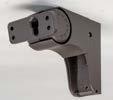

Brian Baker, CLMC, CLCP, CLEP has worked in the lighting industry since 1990 and is a senior project manager for Energy Management Collaborative (EMC). Baker also currently serves as Vice President on NALMCO’s Board of Directors and has chaired the Certification Committee since 2017. He has been instrumental in the organization’s certification updates and led the recent refresh of NALMCO’s flagship certification, the CLMC.
Don Peifer is an entrepreneur, lighting product designer, and sustainability expert. He received his Masters of Architectural Sciences in Lighting from the Lighting Research Center at RPI. Peifer is the founder of Earthlighting and Smash the Bulb and has a Living Future Accreditation (LFA) from the International Living Future Institute. In February 2022, Peifer was awarded one of 4 L-Prizes for the Concept Phase by the Department of Energy.

James Benya is an illuminating engineer and lighting designer recognized worldwide as a consummate professional. As the recipient of over 251 lighting design awards, he is regarded as North America’s premier designer for environmental responsible lighting design, daylighting design, and energy efficient street lighting sensitive to the biological needs of all living beings. He is a Fellow Emeritus of IESNA and Fellow of IALD.
Mary Beth Gotti is a lighting consultant and current Chair of the National Lighting Bureau. She worked in the GE Lighting business for almost 40 years in a number of roles in lamp technology and marketing, including manager of the GE Lighting Institute in Cleveland, Ohio. She is Lighting Certified (LC) by NCQLP (National Council on Qualifications for the Lighting Professions) and is a member of the IES (Illuminating Engineering Society).
Todd Tiberi is the Director of Project Development with Wesco's energy solutions group. With an Advertising/ PR degree from Pennsylvania State University and NCQLPLC certification, Tiberi has held many sales roles and management positions. His key projects focus on LED lighting upgrades.





Shirley Coyle is an independent consultant and principal of Relevant Light. She has worked in specification sales and executive leadership roles for several lighting manufacturers over the past 30 years. Lighting Certified since 2000, Shirley is a Past President of the Illuminating Engineering Society (IES), and is active on several IES technical and service committees.
Editor and Publisher
Randy Reid
Assistant Editor Parker Allen
VP, Advertising Sales Cliff Smith 917.705.3439
Production and Design Coordinator
Angie Hullfish
Art Direction Seraphine Morris




Staff Writers
Katie Smith Jacob Wright
Lighting Management & Maintenance (LM&M) publishes information for the benefit of its members and readers. The sponsor (NALMCO), publisher and editor of LM&M cannot be held liable for changes, revision or inaccuracies contained in the material published. For detailed information on the products, programs, services or policies covered, it is recommended readers contact the appropriate person, company agency of industry group.
LM&M is published by EdisonReport (ISSN pending). Statements and opinions expressed in articles and editorials in LM&M are the expressions of contributors and do not necessarily represent the policies or opinions of the EdisonReport. Advertisements appearing in the publication are the sole responsibility of the advertiser.








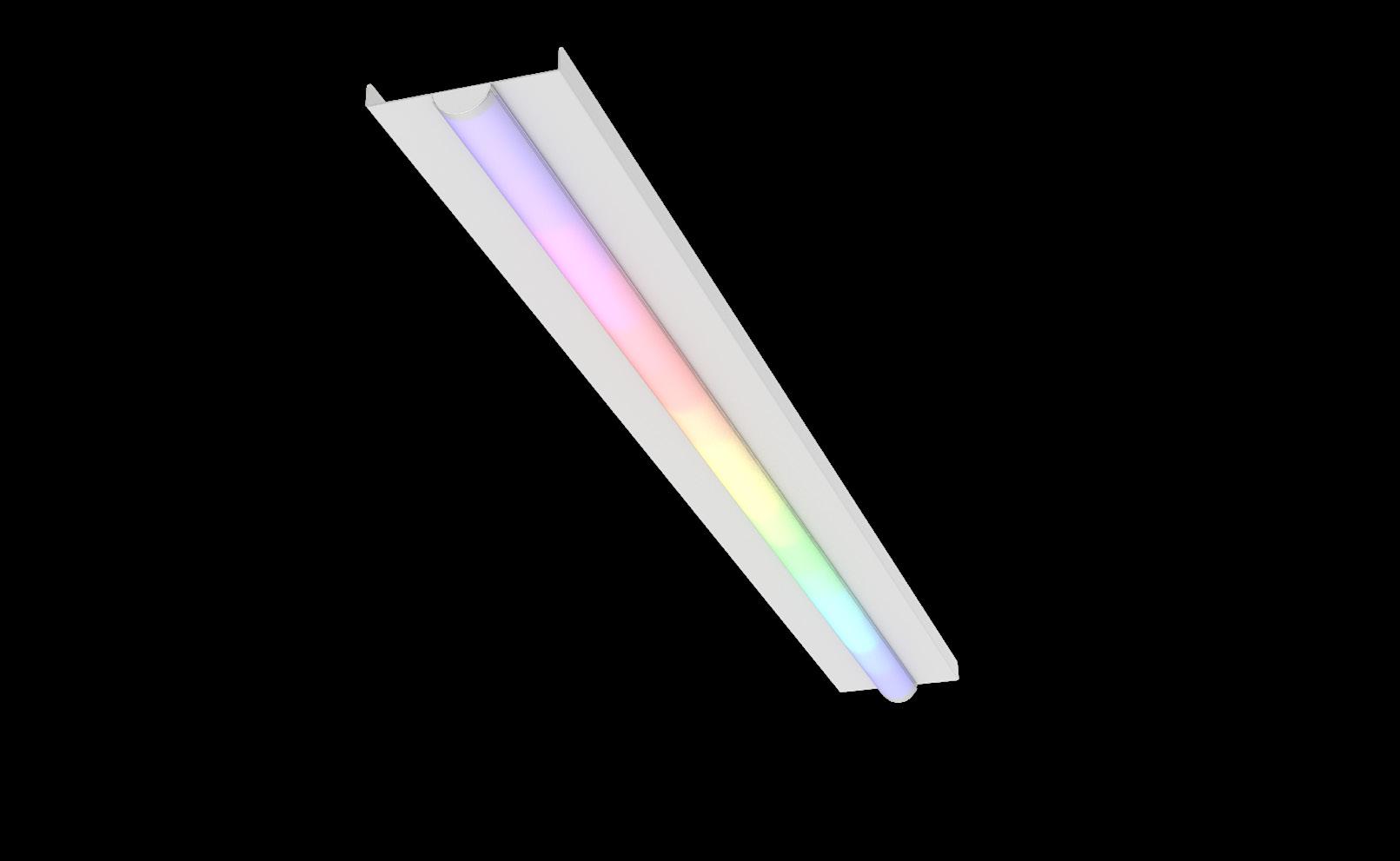















I I hope this message finds you well as we all start to prepare for the upcoming holiday season.
SCOTT MENDELSOHN, CLMC
The NALMCO organization recently wrapped up our 2022 Annual Convention and Trade Show in Arizona, which was a huge success. We had over 215 attendees far surpassing the total from 2021. This convention gave attendees the opportunity to learn, network and have some fun with other members from across the country. Our Program Committee led by Monica Kristo and Pattie Cagle, along with NALMCO Executive Director Jessica Thornton and Event Management Professional Kerigan Hunziker, did an incredible job of planning and executing the conference.
We here at NALMCO are continuing to work on our goals and objectives as we make our way into 2023. I am incredibly excited for what’s to come at NALMCO, as we have some very exciting things in store.
The NALMCO Certification Committee is continuing to explore several new certifications, including auditing and UV lighting certifications, while also continuing to update current certification content. This is taking place while simultaneously working on expanding the reach of these programs to businesses and educational institutions, as well as other contractors throughout the country.
NALMCO’s Program Committee is already busy planning the 2023 events. In March we will meet for our Annual Spring Seminar in Indianapolis, IN. As in previous years, the seminar will be a mix of industry speakers as well as educational learning labs. In October, we will gather in Indian Wells, CA for NALMCO’s 70th Annual Convention and Trade Show, which will undoubtedly be an amazing event you will not want to miss.
The NALMCO Communications Committee will also continue to work to expand the coverage and reach of the LM&M magazine. This publication has long been a staple of the organization, and we are excited continue to work with Randy Reid and his team into 2023 and beyond.


Finally, I’d like to thank the entire Board of Directors for their support over the past two years. This board has worked tirelessly to continue to push forward the objectives of the organization during a challenging time; however, I firmly believe we have prevailed and will flourish far into the future. I also want to thank the entire NALMCO organization. It has been an honor to serve as your President.
Thank you for taking the time to read this edition of LM&M. Wishing the very best to you and your family.
Sincerely,
When it comes to advanced lighting and dimming controls for parking lots and other large exterior applications, a WALI™ System from Sunrise Technologies is second to none!
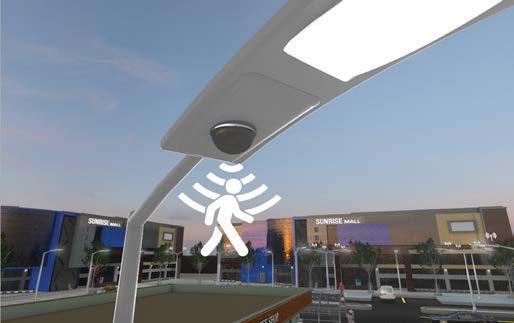





WALI EZ Systems are the perfect plug & play solution for smaller scale projects that require basic dimming control, 7 day scheduling and Occupancy Sensor (motion) integration. EZ Systems also include our EZ Gateway and can be remotely managed via a smartphone and app.


WALI XT Systems include all the functionality of our EZ Systems with several added features including larger quantity node deployment, Building Management Integration via BACnet, advanced 365 day scheduling, remote access via web interface with energy management tools, and an executive dashboard for management of multiple sites.
All WALI Systems are manufactured in the USA by Sunrise Technologies, the industry leader with decades of lighting control experience, a reputation for quality and reliability and thousands of installations around the globe. Both EZ and XT Systems are available for quick delivery.
Talk to a Sunrise Application Support Expert today to learn more about how a WALI System can help you optimize lighting control and energy efficiency.
Sunrise Technologies
370 Paramount Drive • Raynham, MA 02767 508-821-1597 • www.Sun-Tech.biz • info @ Sun-Tech.biz
I had the opportunity to attend the 69th Annual Convention in Phoenix last month and was blown away by the success of the show. The content was strong, and, as your new editor, I wanted to meet people and get ideas for meaningful topics. There were two very consequential subjects discussed that call for further exploration: lumen maintenance of exit signs, and the likely possibility of crime committed against individuals charging their EVs.
Since no lamp or ballast will fail, exit signs just continue to depreciate, eventually to an unsafe level. We learned that CLI Services conducted a study in conjunction with Mt. Sinai’s Light & Health Research Center and found that 25% of the exit signs tested were either at their minimum acceptable level or below. This is a huge issue (and opportunity) that deserves more attention.
I drive a gasoline/electric hybrid vehicle. I don’t run the risk of being stranded when my battery runs low the way drivers of purely electric vehicles do, so I rarely charge in public. It never dawned on me that when a vehicle is connected to the charger, the driver is literally tethered to the charging station. I don’t think criminals know this yet (and hopefully they don’t read LM&M). Let’s say your battery is at 10% while you are running errands one evening, and you pull into a charging station for a quick 15-minute charge. You are approached by an individual, and your intuition tells you to flee. If you are connected to a charger, you are literally locked in. You would have to exit your vehicle to remove the connector, exposing yourself to a potential threat. You could call the police, but in some cities they don’t respond quickly.
According to recent data from the FBI, in 2020, highways, alleys, streets, and sidewalks were the #2 location for violent crimes in the U.S. Parking garages and parking lots were #3. Convenience stores were #4, and gas stations were #7. These are all primary locations for EV chargers.
One of the best ways to prevent this crime is with proper lighting—a topic that this audience knows well. This is another reason why today’s lighting management and maintenance companies are the best choice when it comes to EV charging installations.
We will further explore these two subjects in an effort to better educate our readers and prepare them for issues that our industry faces.






Established in 1972, the International School of Aberdeen moved to its current campus in 2010. The school’s website explains that their “experienced team, world-renowned curriculum and impressive facilities offer a modern, flexible approach to education.”
Proper lighting is a key component of their impressive facilities. It is crucial to their mission to deliver excellence in education, and, in 2018, they retrofitted their gymnasium with versatile, efficient Filamento VALTO lamps in order to deliver the best lighting possible.
Despite being less than a decade old, the gymnasium lighting was already in need of a major upgrade. The lighting level was measured to be 25 foot-candles, far below the recommended 50 footcandles for basketball courts. The school wanted a retrofit solution that would provide the proper amount of light while simultaneously saving on energy costs. And, in order to minimize installation costs, they wanted a product that would work with the magnetic ballasts already in place.
Ian Williamson, the school’s Facility Operations Manager, initially tried several products, but those products either didn’t meet the light

recommendations for gym activities, or they produced an uncomfortable level of glare.
After some research, Williamson came across the Filamento VALTO light source. It promised all of the benefits, with none of the shortcomings. He installed a trial fixture. When the decision makers saw the VALTO next to the old HID lamps, they went ahead and placed the order for the rest of the gym. “The comparison was shocking, and we could not go back to the dark. The VALTO was much more even, very natural and with no glare,” said Williamson.

The VALTO resolved the problems that the retrofit team was facing. Installation was easy and inexpensive, as the VALTO is compatible with the magnetic ballasts that were already in place. In fact, Filamento lights have been tested with over 80+ different ballasts and have yet to find one that their light is not compatible with. So, there was no need to remove the old equipment. Installation was as easy as screwing the new fixture into the socket.
And the glare problem? Thanks to the VALTO’s integrated optics, glare is never an issue with these fixtures. Each LED is slightly recessed, helping to deliver lumens on target. The light beams feature a hard cutoff, so there are no wasted lumens. Furthermore, each lamp utilized Filamento’s patented uplight ring, a thin, curved ring that clips onto the fixture and redirects some of the light upward to better illuminate the gymnasium space.
“We solved every issue at the lamp level,” explained Frank Shum, founder and CEO of Filamento. The VALTO is the culmination of Frank’s long career in lighting, beginning with his time at the University of Rochester studying optics. He went on to help develop new LED technology at BridgeLux and then built the world’s first true LED MR16 lamp while working at Soraa. Frank estimated that he holds over 100 patents, a testament to his prolific creativity. But, his desire was always to work on end products, and he founded Filamento in 2015 to do just that.
The result is a versatile, aesthetically pleasing fixture that is compatible with any existing infrastructure. The VALTO lamps transformed the gym at the International School of Aberdeen into a comfortable, uniformly-lit, energy-efficient space. “You cannot buy a brand new fixture that will do what we did with the retrofit lamp,” declared Frank. The gymnasium looks like a different facility with this upgrade. Looking at the transformation, it is easy to see why the VALTO is a popular choice for big, open spaces like this project. ■


Whether it is circadian, smart, agricultural or UVC, the lighting industry loves a trend. The industry’s most recent trend, sustainability, appears to be on a collision course with the LED. When it comes to sustainability, we can advocate for the use of more natural materials in luminaires, optimize for daylight design and rethink packaging. We can’t, however, get around the fact that the basic building block— the LED itself—is made of pretty noxious stuff. Lead, arsenic and other potentially hazardous substances have been linked to cancer in humans as well as posing threats to critical ecological systems such as rivers and lakes.
So, what is to be done? We could follow recommendations from many local MRFs and simply throw our LEDs in the trash. For obvious reasons, this is not ideal. We could take a page from the fluorescent playbook. When CFL popularity spiked, spurred on by nationally-mandated programs to “change a bulb and save the planet,” we naively failed to flag fluorescent’s pernicious methyl-mercury content. We were quite certain that our CFLs would last for decades. They didn’t, because the CFL electrolytic fluids evaporated, and we realized too late that fluorescent take-back programs were not in place. It would take the better part of a decade to get fluorescent recycling fully realized.
LEDs have proliferated into every conceivable application. How do we as an industry get ahead of the game? What strategies can we employ? Certainly, we can advocate against single-use LED products and create austerity-type messaging to change how we view the lifetime of LEDs vis-à-vis the fixtures they are placed in. Many consumers of lighting in the wake of past issues simply don’t take the word of manufacturers when it comes to lifetime of the product. With the NAILD saying the quiet part out loud , we might consider more timely strategies—those that rebuild trust in the promise of LEDs.
One possible solution is downcycling. We’re familiar with recycling. That’s the story of our products at their endof-life. Stripped down to basic materials, they disappear from our curb side, go to meet similar materials, which, in turn, become basic building blocks again. That’s the theory, anyways. Recycling is complicated by variations in requirements from community to community. From my
vantage point, it doesn’t appear to have taken hold in the lighting industry itself. How many lighting products currently in the marketplace are advertised as made from postconsumer, recycled content?
Downcycling is different. It is a holistic strategy that zooms out to consider the entire lighting ecosystem, analyzing requirements and looking for synergies. It uses illumination standards as its key variable. Take healthcare lighting as an example. The requirement for maintaining pre-prescribed illumination standards is critical. Consider a patient who has a health event in a hallway. A doctor needs to be able to see clearly, ascertain color, etc. We could designate this application as Tier 1. In a Tier 1 application, building engineers may not trust the L70 data from a manufacturer, and, erring on the side of caution, swap out light sources at L80 or L90. In a downcycling ecosystem, that perfectly useful light engine that has reached the end of its Tier 1 term could then become the light engine for a fixture in an application that is less exacting about illumination standards, like undercabinet lighting. This scenario imagines undercabinet lighting as Tier 3 or 4. Again, illumination standards are important, but, given the lack of standards or recommended practices for undercabinet lighting, there is a wider margin for outputs from one product to the next than you might see elsewhere.
Different application requirements can drive the classification system as well. Take energy conservation as an example. Tier 2 applications might be defined as those where illumination standards are considered very important but not critical. An example may be classroom lighting. Certainly, maintaining illumination standards is important, but most classroom lighting is supplemented by daylight, and features like output may be de-emphasized in favor of the ability to control various scenes. Furthermore, a school district’s top priority for lighting is budgeting the monthly energy costs associated with lighting. Given the increase in efficacy in LED lighting engines over the course of several years, stakeholders may choose to swap out light engines early in order to gain an operational advantage. In this scenario, light engines that make it to L60 output can, in turn, be downcycled into a Tier 5 category, such as lighting for appliances.
For every application there is a different calculus involved, and the solutions are not without nuance. Take
grazing as a sub-category of office lighting. Output—that is, putting light on the wall—is obviously important, but could it be done with a downcycled Tier 1 engine? These are questions that we discuss as an industry, and chances are good that any embryonic downcycling program would be initially relegated to a niche application. In order for any of this to happen, however, several things must happen. We would need to standardize light engines, not to mention best practices for installing and uninstalling the light engines. We would also need an industry-wide alliance around ease of access. Lastly, there need to be incentives created to facilitate the process.
harder for product designers to design around. In addition, there are connectors and passive devices that sit on most standard Zhaga boards, which can compromise certain downcycling lighting methods, such as edge lighting.


We need clean boards, easy plug-in/plug-out connectors and a more economical use of the base materials. The current “cookie bite” cut-outs on Zhaga boards are meant to facilitate fastening the boards to the luminaires, but a more reasonable solution would allow for tool-less installation and retrofit. Snap-fits and methodology, which help confirm—in this case, by sound—when an engine
Hypothetical tier classifications.
Figure 1
is properly seated in the luminaire would be helpful for consumers and eliminate the use of glues that may lead to breaking the board upon disassembly.
Currently, there is very little in the way of standardized engines. Zhaga-compliant linear and square light engines exist, but they leave a lot to be desired. Take the linear engine in Figure 1 as an example. At 18mm wide, it is a bit of a beast. In an era when the FR4 board costs more than the LED itself, it begs the question why a typical LED array encompasses only 3% of the FR4 board surface area. Add to that the trend of luminaires getting smaller and smaller, and you have a building block that is more cumbersome and
Most important to a robust downcycling strategy would be easy, room- side access to the LED engine. Many of today’s LED luminaires are static—they don’t allow air flow, and the LEDs are entombed in the product along with the power supplies. User-friendliness— designated as the ability to easily access the base light engine components—must be table stakes for, at the very least, commercial luminaires. All this can be facilitated by incentive programs that allow the manufacturers who embrace the user-friendly moniker to directly market their products as earth-friendly. Specifiers should not only get in the habit of asking what happens to luminaires once they have been in the field a certain amount of time, but, in addition, asking how the luminaires are serviced. New product table top presentations and samples should, in no uncertain terms, answer those questions. The systemic downcycling of LED engines not only helps with the short-term sustainability goals of the industry, but it facilitates a sea change involving our relationship with products, what is considered “new,” and why consumerism should be tied less to instant gratifi cation and more to a responsibility to do no harm. ■
EarthTronics introduces its 5”/6” LED Recessed Ceiling Light Trim Kit offering five color selectable operations (2700K, 3000K, 3500K, 4000K and 5000K) for commercial and residential retrofit and new construction applications. It is ideal for use in residential kitchen, bathroom, and family room applications. The nine-watt downlight delivers 94 lumens per watt with a high 80+ CRI. It easily adapts to popular 5- or 6-inch downlight recessed fixtures as a retrofit to existing fixtures or as a trim kit for new installations.




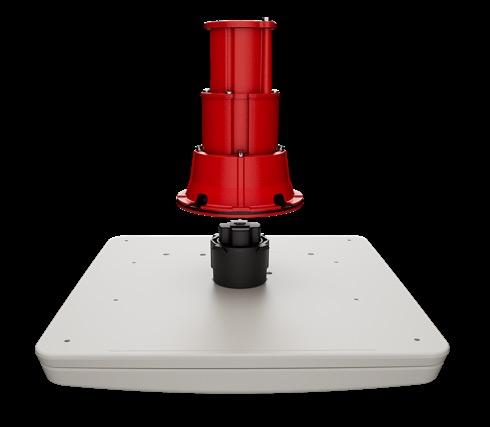

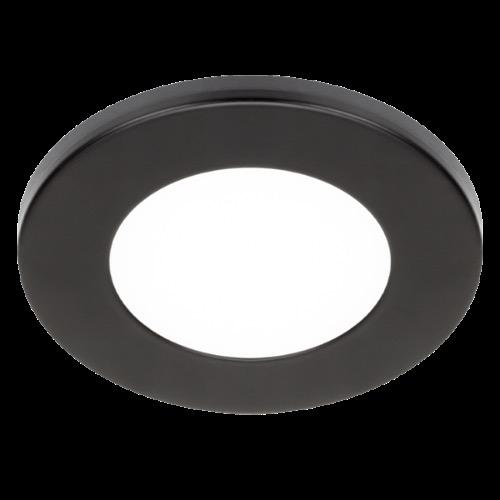
The ultra-low profile Omni Slim puck light is only 1/16” tall (1/4” with trim) but produces up to 170 lumens. The 2.5W Omni Slim delivers excellent color rendering (90+ CRI) and is available in 3000K or 4000K with a black or white finish. This task light that is perfect for any accent, under-cabinet, in-cabinet, and other small niche area lighting applications.
With LSI’s REDiMount, you can wave goodbye to the old, complicated way of installing canopy lights and say hello to the next generation of installation that’s built for speed, quality, and reliability. The simple three-piece design is completely weather-proof, requiring only one canopy per fixture, and maintenance can be performed entirely below the canopy.

numerous distributions, and a variety of mounting options, the Blade Series area light from ESI is your one stop shop for site lighting. Rotatable optics, glare shields, and smart controls make this THE go-to option for site lighting!







Lighting has come up with a completely automated solution for parking garages by packaging parking guidance, LED lighting and WiFi. The provides a seamless and touchless experience for drivers and driverless vehicles alike. Simply enter a Park-Kit garage, be guided to a parking space, and the rest is taken care of for you. The layers of software that makes Park-Kit tick are open-sourced and are based on the WiFi/Linux operating systems. Watch the Park-Kit video and see for yourself what the future of personal transport within metro


features a powerful outdoor LED system designed for area and pathway lighting, providing safety and security. With advanced optics and PLED options, its robust performance makes it ideal for use in parks, city squares, shopping malls and on exterior commercial buildings. Multiple lens options allow for many different illumination appearances, from diffuse and low glare to high performance wide coverage. The Beyond Bollard offers the flexibility of the standard 42” bollard to an 80” column with the option of any height from 2’ to 8’.
utility-grade post-top that offers a traditional turnof-the-century shape, modern material choices and is an economical alternative to other performance globes. Manufactured in acrylic for longevity without discoloration, the configurable top allows multiple finished shapes; by adding the cap and/or a finial, the overall appearance can be tuned for the application. The innovative locking design allows the top and bottom to be efficiently shipped and then permanently field assembled with no tools.
Picture this: you are on your way to the 2023 NALMCO Convention in Palm Springs, California. You’ve decided to make the drive up the night before. In a rural stretch of California, you notice that your electric vehicle’s battery is running low. It is not an ideal place to stop and charge, but there is an EV charger at the next rest stop. There might not be another charger for miles. The charger is in a corner of the vacant rest stop parking lot, concealed from the highway by a row of trees. Feeling a little uneasy, you pull up to the charger, plug it in and get back into your car, locking the doors. Another car pulls up in front of you and out steps an assailant, wielding a gun and demanding your wallet. You are safely locked inside your vehicle, but there is no way to
disconnect the charger and drive away without getting out of your car. Your car is literally locked to the charging station. You are trapped and defenseless.

This hypothetical scenario is all too plausible. As discussed in our previous issue, the number of electric vehicles on the road and the number of charging stations is on the rise. Charging an electric vehicle presents the perfect opportunity for someone with bad intentions. The owner is sitting in a nice car, usually in the back of a parking lot somewhere, hooked up to a charger that you can’t just drive away from. While you might be relatively safe in your car with the doors locked, you will eventually have to get out of the car to unplug the charger.
The situation is not quite the same as when you are filling up with gas. Even when you are filling up at the pump, your car is not locked up. You can start your car and drive away if you must. Gas stations are typically well lit, and they have cameras and attendants that might help ward off would be thieves. Additionally, filling up at the gas station takes no more than five minutes. The quickest EV charger takes 3 times as long, and some take much longer than that.

One way to avoid this issue would be to utilize a home charger, but that solution is not always possible. Home chargers can be expensive for home owners to install, especially if the necessary electrical infrastructure is not already in place. Many EV owners live in condos or apartment complexes, where the charger is not always accessible, if the building even has one. For those without access to a charger at home, public chargers are the only option.
Where are most public chargers located? Out of the way, mostly. Retailers who install EV chargers (as a way to draw customers to their stores) typically place them in the back of the lot, far away from the store and its bright lights and cameras. My former employer, Vanderbilt University, has two public charging stations, both in low-use parking lots away from the main campus and with very little overhead lighting.

The introduction of any new technology presents an opportunity for those with bad intentions to take advantage of a situation where the safety issues aren’t fully fleshed out. The widespread installation of EV chargers is reminiscent of the days when ATMs first came onto the scene. There were countless stories of customers being robbed while using the machines. Nowadays, the situation is much safer. Every ATM you visit will be, at the very least, located near a building and in a well-lit area. In fact, New York state law requires the following for any outdoor ATM:

1. five foot-candle illuminance at a point five feet away from and at five feet above the
ground from the ATM, 2. two foot-candle illuminance at a point 30 feet away in all unobstructed directions, and 3. one foot-candle of illuminance at 60 feet away in all unobstructed directions.i
The unfortunate history of safety issues like this is that nothing is typically done until a serious incident occurs. Let’s not let that be the case here. Let’s be proactive, and, in doing so, maybe save lives. We hope that, by spreading the word about this possible safety risk, we can encourage those installing chargers to install additional safety measures, like adequate lighting, so that this possible safety issue ends up never coming to fruition.
Talk to your customers about where they want these chargers installed. Propose installing them closer to buildings and in higher-trafficked areas. And, suggest that adequate lighting be installed along with the chargers. Because electricity is already being run out to the charging station, the addition of several lighting fixtures is an easy measure that can be taken to keep electric vehicle owners safer when they charge.
■
i Integrated Security Group. (2022, June 21). New York’s ATM Safety Act: Is Your Bank in Compliance? ISG Blog. https://www. isgsecurity.com/blog/new-york-atm-safety-act-is-your-bank-incompliance/

 By Mary Beth Gotti, Chair, National Lighting Bureau
By Mary Beth Gotti, Chair, National Lighting Bureau
The National Lighting Bureau is pleased to introduce the new Lighting Transformation Awards for 2023. This program recognizes excellence in lighting retrofit projects, defined as those projects involving minimum alteration of existing building materials. Through the creative use of lighting systems and controls, these projects should illustrate the value of lighting, including but not limited to improved visual performance, promotion of health and wellness, enhanced safety and security, increased overall occupant satisfaction, and environmental impact, including reduced light pollution/preservation of nighttime lighting quality.
The main intent of the program is to promote best practices for a variety of indoor and outdoor lighting applications. The program aims to recognize and showcase projects that provide a narrative and “how to” guide for others with similar lighting retrofit challenges.
Anyone may enter a project for the Lighting Transformation Awards, and there are no fees for entry. Projects should have been completed within the 2021, 2022 and 2023 calendar years. Submissions should be entered via the designated online submittal form and completed no later than August 1, 2023.
Thoroughness in determining retrofit design options.
Documented improvement in lighting quality (including but not limited to before and after light levels/ uniformity, glare control, color enhancement, post-installation occupant surveys).

Energy effectiveness (including controls strategy) – including before and after energy usage.
Universality - how easily does the design apply to similar applications.
Sustainability (ease of maintenance, user interface effectiveness, use of recycled materials for product and packaging or materials that can be recycled).
Special credit points (up to 20 points) can be awarded at the discretion of the judges for extra challenges and project impact - e.g. budget, timing, location challenges/limitations, and social benefit (community impact, pro bono projects, historic preservation).
Including supplemental data beyond images and lighting specs (e.g., planning documents, meeting minutes, social media comments) is encouraged.
Winning projects will be recognized during the 2023 NALMCO Annual Convention in Palm Springs, California. More details to follow. ■
Outdoor lighting projects are either facing or will soon face limitations from a new generation of codes and standards associated with the Dark Sky movement. While outdoor lighting codes are not a totally new idea, 21st century standards such as the Model Lighting Ordinance (MLO) are designed to restrict lighting options by factoring in off-site impacts like light trespass and light emitted upward into the sky. And the message is getting out to regulators. Those who work in California face the state’s environmental code, CalGREEN, and the Title 24 energy code that together limit commercial lighting very much like the MLO does, and the California Coastal Commission is especially concerned about any lighting along or near the coastline. Those who work in Florida know that lighting on or near many of its beaches is restricted to long wavelength, fully shielded luminaires, and not many of them. And those who work in Southern Arizona face stiff standards to help preserve the night sky for astronomy. Slowly, place by place, modern lighting codes are becoming part of our regulatory framework.
The start of the Dark Skies movement can be traced to the predecessors and founders of the International DarkSky Association. IDA was founded in 1991 by Dr. David Crawford, an astronomer and recipient of the 2021 IES Medal, and Dr. Tim Hunter. Although heavily influenced by the impacts on astronomy by anthropogenic light at night (ALAN), IDA has somehow managed to take a broad view of the topic and early on, looked upon ALAN’s impacts on people, plants, and all other manner of living beings. Even before the “human centric lighting” era, IDA members and other scientists were studying the impacts (mostly negative) of ALAN with disturbing results. Thanks to Dr. Crawford and his unbeatable promoting skills, the IDA and IES collaborated in developing the MLO, including the lighting zones, TM-15-11 and the BUG system. Meanwhile, a pair of scientists from the University of Southern California, Dr. Travis Longcore and Catherine Rich, published Ecological Consequences of Artificial Night Lighting that discusses the impacts of light at night on a number of different species. Their work
became an integral part of the Dark Skies movement. There are still challenges in bringing them together, but nothing that we as an industry can’t overcome.

It has taken a decade since the MLO for the dark skies idea to even begin to mature. At first, there was an undercurrent of push-back because outdoor lighting was competing with the energy efficiency improvements of using LED luminaires. Early LEDs were most efficient at high color temperatures, and this gave rise to 4000K and 5000K lighting outdoors that still persists. But, major improvements in 3000K, 2700K and now 2200K have occurred, and the efficacy of these sources is at least 75% of that attainable with the glaringly bright high CCT lights. This became critically important in 2015, when the American Medical Association, frustrated with a lack of progress and the amount of disinformation, took a stand in declaring all outdoor lighting should be 3000K and less. I remain frustrated, however, as far too many people confuse glare with good vision and think 4000K (or higher) is good because its glaring. It is not, with a few notable exceptions. For instance, the US Tennis Association (USTA) requires 4000K or higher for competitive tennis court lighting. I still wonder how they played tennis under incandescent lighting, but honestly, I think it has more to do with television cameras than tennis.
That said, I am encouraged by the increasing stream of publicity and several important initiatives. In 2021, the IES and IDA announced a strategic collaboration to address “the global issue of light pollution that negatively affects our environment and the human condition.” The first joint action was to create “Five Principles for Responsible Outdoor Lighting,” that include
1. All lighting should have a clear purpose 2. Light should be directed only where needed 3. Light should be no brighter than necessary 4. Light should be on only when it is useful 5. Use warmer colored lights where possible
The MLO helped by providing lighting professionals with guidance, and the USGBC helped by adding controlling light pollution as a point in LEED. But still, the three major decision makers for most lighting remain price, availability, and whether it will light the heck out of everything. Nasty, glaring 5000K LED floodlights and LED replacement lamps are leaping off the shelves of distributors and DIY stores and onto small commercial properties and private homes at an alarming rate, and ill-advised cities are installing 4000K LED streetlights. People tend to relate glare with safety and security. This awful trend breaks every one of the five principles, and it is out of control at the moment.
Now, along comes help from two influential organizations that I think can make a quantum difference. DesignLights Consortium® (DLC) has introduced LUNA, technical requirements that are “…intended to mitigate negative impacts of lighting at night by establishing system performance specifications and best practices.” It serves as a qualified products program similar to their energy efficiency programs, and I hope will be used by utilities and ESCOs to eliminate poor lighting practices in the retrofit and replacement lighting market.
The other is the National Association of Innovative Lighting Distributors (NAILD), a national nonprofit trade association driving lighting innovation through networking and education. They believe that through proper training, the distributor’s employee “at the counter” will educate electricians and contractors as they sell them appropriate gear. They have embarked on a Dark Sky Training program for their members. I think this may be one of the best ideas yet. Try to imagine a world without unshielded 5000K floodlights and wallpacks! Now if only the DIY stores and websites would stop selling high CCT LED products to consumers.
Finally, dark sky concerns are not limited to lighting, either. A whole new generation of billboards and signs using LED pixels instead of floodlights is rapidly

replacing old fashioned billboards, offering constantly changing and very bright images. In response, IES RP-39-19 dramatically reduces recommended sign luminance according to lighting zone, which is a start. But, it does not address the ability to “aim” the light of a modern LED billboard at an intended audience while not lighting neighbors’ homes and yards and seems based on obsolete technology and techniques. Now that LED billboards can be aimed and dimmed and their emitted spectrum controlled according to time, I foresee a revolution in this already evolving marketplace that will also require visionary leadership to develop appropriate standards based on new capabilities.
The big question that the lighting industry should ask itself is whether we want to make a bigger commitment and get better organized to address how our work ends up regulated. Like many things in our industry, we rely too much on personal initiatives until the government gets involved. That’s how energy codes went, and how, until recently, we developed the lighting energy codes as professionals and experts. Unfortunately, once governments get involved, the industry as a whole loses control, as lobbyists and influencers take over and the probability of a high-quality and appropriate outcome diminishes. We are at an inflection point in the challenge to achieve and maintain dark skies. I hope we can rise to the occasion and, like we did with energy codes, encourage better applications and our own standards well enough to achieve significantly darker skies without excessive government blundering.
Calling all lighting contractors: We won the energy efficiency war, as lighting today uses 90% less energy than energy code compliant buildings in 1979. Now, we must turn our attention to reducing outdoor light pollution. This will be harder.
 By Todd Tiberi
By Todd Tiberi
An apple so delicious-looking you can practically taste it on your tongue. A diamond so sparkly it beckons. A silk tie that’s exactly the right shade of blue.
What makes these products look so appealing that shoppers are inspired to open their wallets? In a word, lighting. Across a variety of retail settings, the right lighting can help drive increased revenue by optimizing the shopping experience — making stores more appealing to enter, encouraging customers to inspect the merchandise, and yes, presenting that merchandise in its best possible “light.”
While energy savings is typically the primary driver of lighting retrofits, the possibility of boosting sales is something to consider. In a survey by California utility Pacific Gas & Electric and the University of California, Davis, of retailers across various market segments, 47% said the potential to increase sales was an even more compelling reason to upgrade to LED lighting than energy cost savings. In grocery stores, the federal government’s Energy Star program found that upgrading to LED lighting resulted in a 19% increase in sales.
What is it about a well-designed LED lighting system that has the power to impact the bottom line? There are several factors.
When it comes to lighting in retail spaces, color temperature tuning counts, since different color temperatures make different products look their best.

For example, an apple will have a greyish cast under cool (blue) 5,000 Kelvin light but appear downright tantalizing under warm (red) light. Light in the middle range, around
3,500 K, works well for meat cases because it makes beef, pork and chicken look fresh. Cool light in the 4,200 K to 5,000 K range enhances the visual appeal of seafood and ensures that ice looks white, not yellow. In a jewelry store, very cool light (6,000 to 7,000 K) makes diamonds and gems sparkle.
Cool light can make a room feel larger, while warmer ambient lighting can create an intimate, inviting atmosphere. A study in a Dutch food co-op found that customers spent more time in areas lit with warmer light compared with those lit with cooler light.
In many cases, the ability to easily change the color temperature via controls — rather than be stuck with one temperature or have to change each lamp to change the temperature — is important. Tunable white LEDs offer this flexibility, which is especially convenient for retailers who often reset displays or sections of their store.
Adding lighting controls could be as simple as installing one or more remote control-enabled fixtures. Advanced building controls are more sophisticated solutions that allow you to control all the lighting under one roof.
Light intensity matters, too. Intensity that is too low means a consumer can’t see the product as well — and no one wants to buy mystery meat, or any other mystery product. Lighting that’s too intense, especially if it’s incandescent lighting, can accelerate food discoloration.
The color rendering index (CRI) measures how faithfully light reveals an object’s color characteristics compared to ideal or natural light. In a guide for grocery stores on improving energy savings, the U.S. Department of Energy addresses how lighting design can help stores boost sales and recommends a CRI of 80 or above on a scale of 1 to 100, with 100 indicating the highest color-rendering capability.
With high CRI lighting and the right CCT, consumers can tell how orange that carrot really is and feel confident in knowing the exact shade of that nail polish, sports coat or pashmina. If customers have to guess how something will look outside the store, they may not buy it. In a fitting room, high CRI lighting can show what clothes will look like on the street.
Why is a shopper drawn to a certain guitar or rack of headphones or special offer display? It could be the accent lighting.

Lighting designers consider light in three “layers”: ambient, task and accent. Accent lighting that contrasts with dimmer ambient lighting draws a shopper’s focus to a product or space and makes it easier to see product features such as texture or stitching. Accent lighting is also useful in store windows to highlight certain products and create drama.

The placement and direction of light matters immensely. For example, in the fitting room, downlights can make shoppers look ghastly, while vertical linear lights on either side of the mirror can make the clothes, and the person wearing them, look fabulous. Outside the fitting room, vertical lighting helps customers navigate the store. Shelfintegrated lighting that targets the lower third of shelves inspires shoppers to linger longer.


A thought leadership white paper on reinventing retail co-authored by IBM and New York University’s Stern School of Business points out that brick-andmortar stores competing with online retail for dollars have to provide a fresh, unique or visually exciting shopping experience to motivate consumers to enter and browse. Businesses must use their stores as a “competitive weapon” to raise the bar and create something new and eye-catching in a physical space, they note.
Without a doubt, lighting can help create a uniquely inviting or intriguing ambience that lures in consumers who might otherwise pass by. With advanced lighting control systems, retailers can even tailor lights’ intensity, color and temperature for different situations and times of day to create the ultimate shopping experience — and boost the chances of a sale. ■

Touched upon in the last issue of LM&M Magazine, focus on supply chain has turned inward toward inland transportation rather than key ports for global trade. To briefly recap, in early September, the possibility of a railroad strike emerged. A deal was reached on September 15 between railroads, unions, and the Biden Administration to cease the threat of an immediate strike. However, not all of the unions ratified the deal to permanently end the threat of a strike. Negotiations have since resumed and are still ongoing. It is important to remember that if just one union does not agree, the other unions will honor the picket line in solidarity.
Of the 12 railroad unions, 7 have ratified the deal, 2 have rejected the deal to continue negotiations, and 3 are still pending a vote, as of the time of this writing. The third largest union, the Brotherhood of Maintenance of Way Employes Division (BMWED), has not ratified any deal with the railroads, but has agreed to extend negotiations until December 4, mirroring the deadline set by the other union that has rejected the deal, the Brotherhood of Railroad Signalmen (BRS). The two largest unions, the Brotherhood of Locomotive Engineers and Trainmen (BLET) and Sheet Metal, Air, Rail and Transportation union (SMART), are still pending a vote. BLET and SMART are expected to vote around the time of this magazine’s publication, so keep an eye out for the results. If either of the largest unions reject the deal, this will put significant pressure on railroads to negotiate a deal before a nationwide strike
commences. If a deal is not reached by December 4, a strike could commence as early as December 9.
Touching upon global supply chain, volumes in the North American market remain largely the same since September. With the lowest YTD volume of outstanding cargo units on the terminals currently, congestion in key ports like Los Angeles and Long Beach has eased significantly. European ports are seeing recovery and improvements across the board in vessel wait times and port productivity. Port strikes, however, remain a possibility. The Port of Antwerp had a strike that just recently ended. The Port of Liverpool also recently ended a strike, but more action may be taken later this month. While Europe has seen improvement, the situation remains turbulent.
Like the update in the September issue, much remains to be seen and determined. Significant progress has been made in 2022 regarding the supply chain, but recent developments have highlighted just how fragile the supply chain still is. As always, an update on the situation will be featured in the next issue of LM&M Magazine. By then, definitive action will have been taken by railroads unions, so stay tuned.
■
Editor’s note: At the time of publication, BLET narrowly voted to ratify the agreement, while SMART voted to reject it. The unions and the railroads will return to the bargaining table and must reach an agreement by December 8.




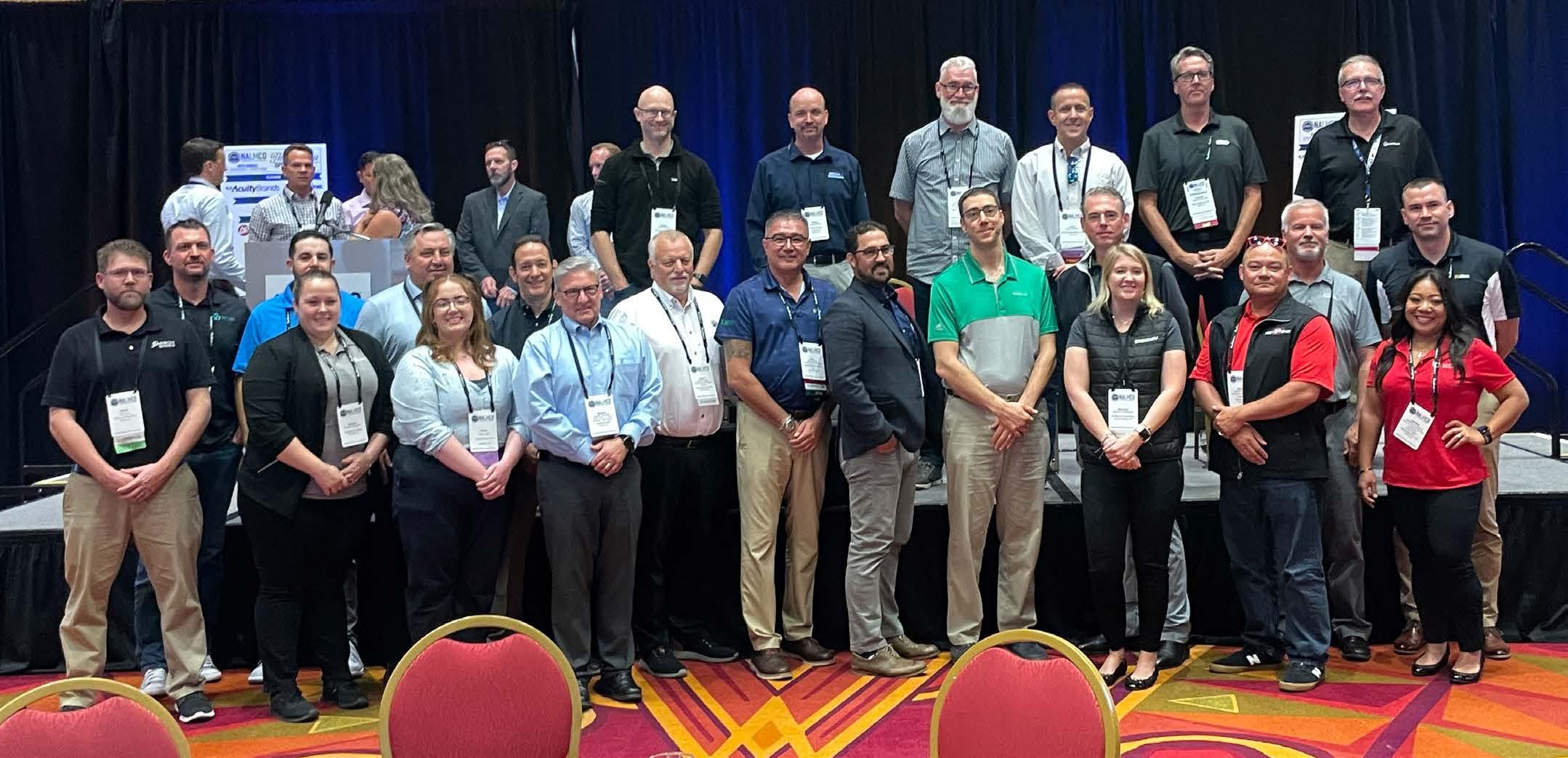
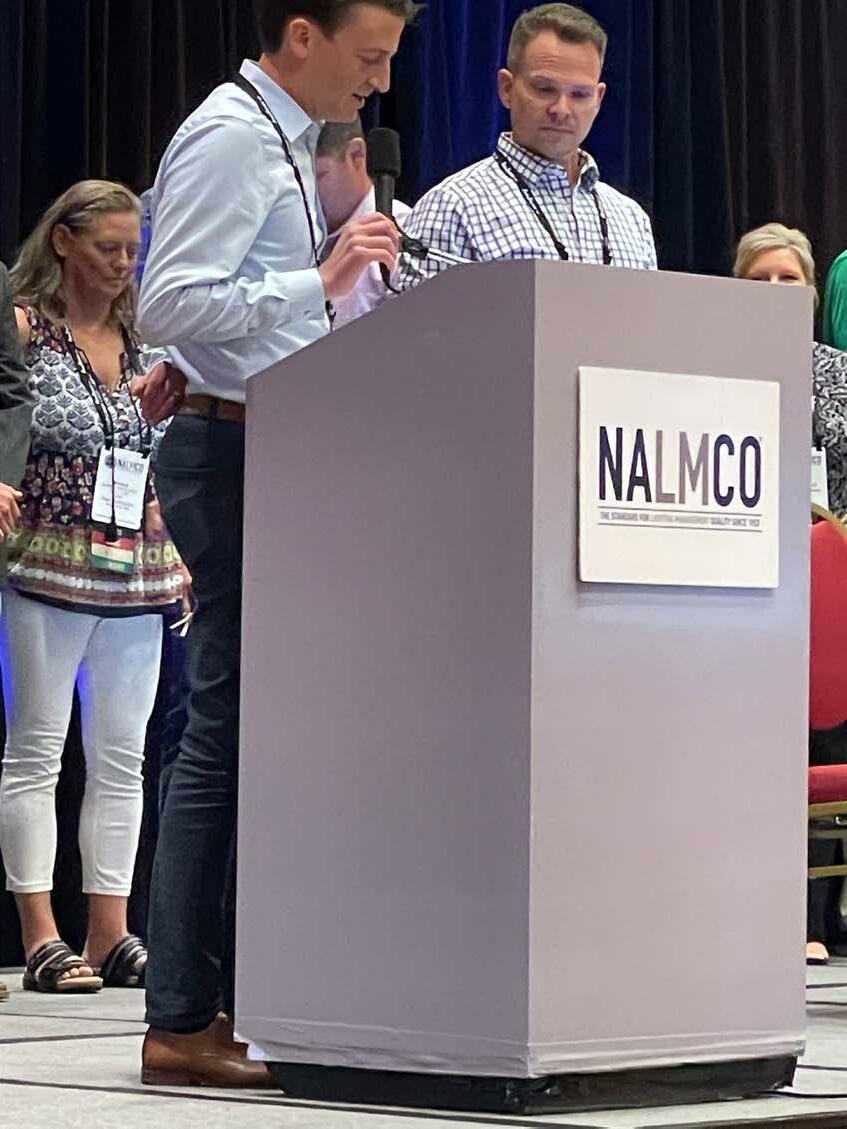

Interview with Scott Mendelsohn at NALMCO Convention 2022
Scott Mendelsohn, the current President of NALMCO, discusses the content of the convention, including one of the Lumen awards. He also discusses plans for the 70th Annual Convention in Palm Springs in 2023.
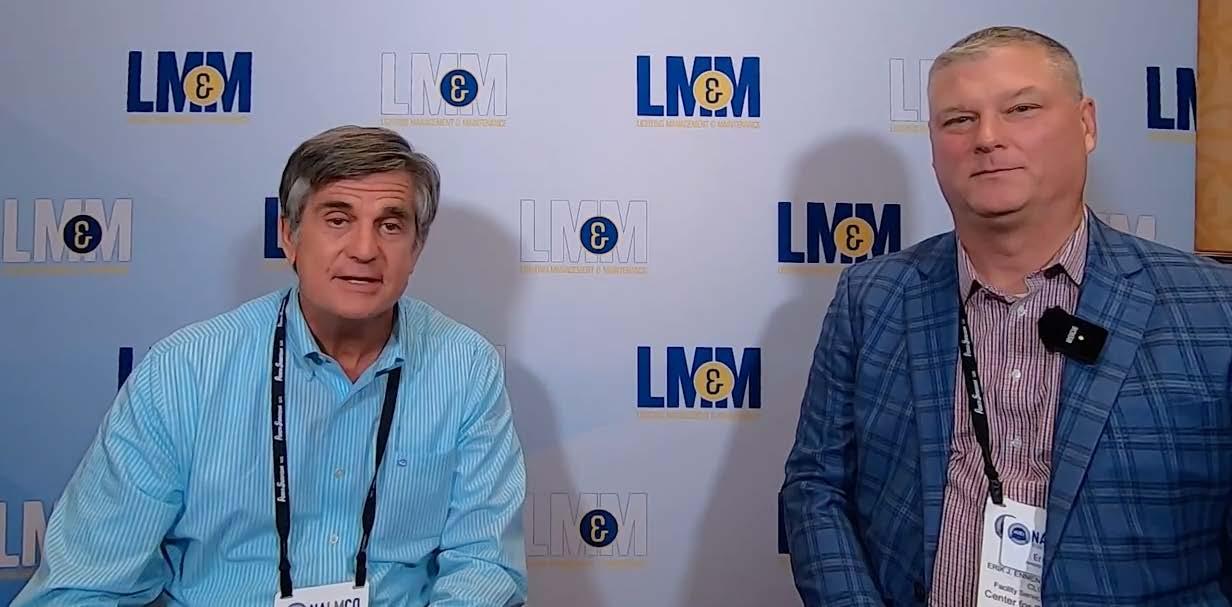

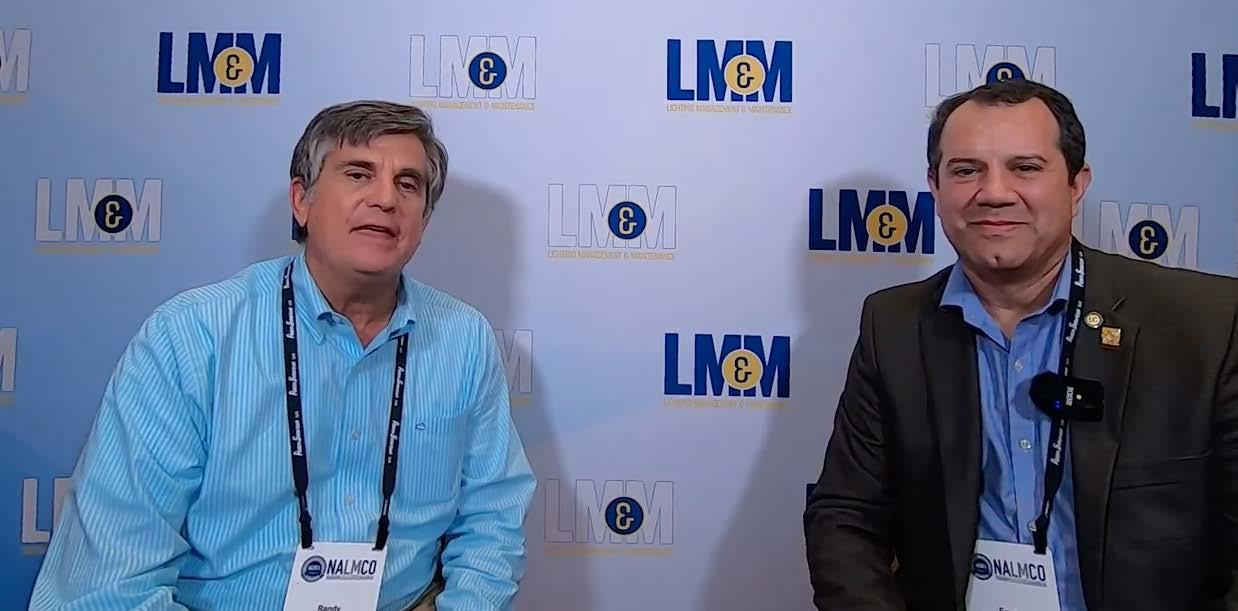

Interview with Randy Allen at NALMCO Convention 2022
Randy Allen discusses his leadership plans for NALMCO, as well as their decision process on holding a convention this year. He also discusses their highly successful speed dating (networking) program.
Interview with Frank Agraz at NALMCO Convention 2022
Frank Agraz, President of the IES, talks about the successful NALMCO convention. He gives a brief update on IES and their plans going forward.
Interview with Erik Ennen at NALMCO Convention 2022
Erik Ennen discusses various certification programs that NALMCO currently offers and plans to offer in the future.
Today’s lighting professionals encounter and must be well-versed in a wide range of lighting technologies, from legacy products like the incandescent lamp to the complex world of LEDs and controls. Given the breadth of available products, it is critical to pursue NALMCO certifications.
Entry level certifications, such as the Certified Apprentice Lighting Technician (CALT), are great for those new to the industry, including technicians and office support staff that may answer calls and emails and need to speak the language. The next level of technical certification is the Certified Senior Lighting Technician (CSLT). This certification is great for field technicians and operational staff looking to advance their learning.
For elevated lighting management professionals, such as designers, specifiers, and sales and operations managers, the Certified Lighting Controls Professional (CLCP) and Certified Lighting Management Consultant (CLMC) are invaluable industry-recognized credentials that will help to elevate your career to the next level.
My company, Energy Management Collaborative (EMC), is illustrative of how valuable these certifications are. At EMC, we require the CALT for all operations employees to ensure a baseline knowledge of the technology and terminology. Beyond that, we have a laddering promotion system, and NALMCO credentials are a key factor in proving a sufficient level of industry knowledge necessary for
advancement. We recognize all four certifications in our advancement and development plans, from entry level to senior project managers and everyone in between.
Certification committee updates:
• CALT / CSLT – A content update is underway in order to align these certifications with current market trends. The committee recently met at Acuity to review upcoming trends and new technologies. We owe a special thanks to the Acuity Academy, the Acuity Learning Center and individuals David Errigo, Janet Cecchettini, Kurt Vogel, Justin Moon, Fred Giordano, Dallin Parker and George McIntyre of Acuity Brands, as well as Kim Cagle, Certification Committee Co-chair and Erik Ennen, Ex Officio officer.
• CLMC – Earlier this year, the committee officially launched a new version of our flagship certification, which is recognized as one of the industry’s highest achievements. The updated exam contains today’s most relevant topics, with a specific focus on LED lighting systems, though it still retains some of the legacy products we continue to encounter.
Visit the certification page on the NALMCO website to learn more about all four certifications. Congratulations to all of our newly certified credentials this year, and thank you for your continued support!
As a newly-minted electrical engineer, Krishan Bhatia worked in missile technology, but after returning to school to complete his Masters in Industrial Engineering, he landed a spot with the Lighting Division of GE Company(GEC) of England in India. Coming into the lighting industry with no lamp knowledge, he was quickly immersed in fixture, lamp and ballast manufacturing, setting up the company’s large manufacturing operation for the transition to HPS lamps. Bhatia’s success in this work caught the attention of GEC’s leadership, and he found himself moved into the unknown world of sales - with a mission to fix a sales region in western India that was struggling. Bhatia learned the sales language and within two years had made the sales region profitable. He was brought back from the field into general management during an exciting period of new technological developments (compact fluorescent and metal halide), and by 1988, he was GEC’s Lighting Division Head, running sales and manufacturing.
The global lamp industry was going through dramatic consolidation at this time. Philips bought Mazda. Thorn sold its lamp business to GE-US, and the GE Company of England was sold to OSRAM. Bhatia made the decision to emigrate from India to Canada, arriving in 1991 to an economic downturn. He hit another unexpected barrier. His international education and credentials, both his BA and Masters in Engineering, were not recognized or accepted in Canada, drastically impacting his job opportunities in his new chosen country. Bhatia notes that that this situation in Canada is much improved now, with a process in place to verify and recognize international education and credentials.
With the first glimmers of utility energy retrofit incentive programs, Bhatia worked on a commission basis,
knocking on doors, using his extensive T8 experience to bring energy savings to business customers. Within a couple of years of his arrival in Canada, he opened his own company, Energy Network Services (ENS), which he continues to lead and build with his family. Bhatia reflects on two “angels” whose support proved pivotal in getting his business established: first, a luminaire and ballast supplier who offered to supply him product before he had started the company, and second, an early retrofit customer who offered office space for a professional set up for ENS, along with up-front payment for materials on the project. Bhatia wryly notes that there were no computers at the start of ENS, just a Smith-Corona typewriter on which his wife prepared the proposals.
By 1999, Energy Network Services had its own facility, and the team was growing. They started performing lighting audits for other energy services companies, leveraging lighting knowledge to come up with better solutions. Bhatia continued to look for new opportunities to develop and expand his business through new markets (grocery, retail) and through acquisition. In 2014, ENS became a national company after buying OSRAM Canada’s SLS lighting maintenance business in a deal that included leases, employees, trucks and several good accounts. Today, ENS is a frequent partner for US-based lighting management and maintenance companies, with ENS able to complete the Canadian sites for large US customers’ programs.
Asked about the key issues facing lighting management companies, Bhatia sees the importance of moving beyond the 1:1 LED replacement, which in now too rudimentary. “Most facility managers are not wanting to just do lamp replacements or retrofits kits” but

are looking for better space utilization. “It’s now possible to get to 0.8W/sf” through effective design and renovation. He also notes the value of lighting management companies understanding controls technologies and investing in specialists in lighting controls and programming. He sees a trend in lighting controls manufacturers outsourcing programing services to lighting management companies. ENS has expanded into lighting controls, with each of their lighting controls specialists trained in 3 to 4 different controls lines.

As for his advice for those who are new to the lighting industry, Bhatia counsels “patience, perseverance and passion” to have success. He points out that with lighting not being taught in

college, it’s important to get training on lighting, lighting controls, IT, Smart City solutions – always learning in order to determine how lighting can contribute to solutions. Bhatia has put countless new employees through the IES Lighting Fundamentals course, supporting education and connections within the lighting community.
And what does Bhatia do for fun and enjoyment? He likes to travel, always learning from different cultures and how others value life. “But my major fun comes at the office – I like to inspire young people.”
With a smile, he adds, “I’m an antique now…trying to race with young employees – they bring a lot of knowledge, and I tell them I’m like an old fluorescent lamp starter, needing to kick in!” ■











